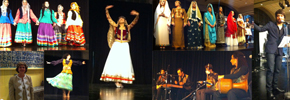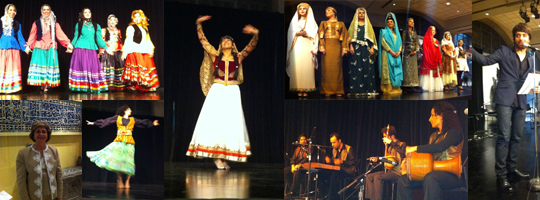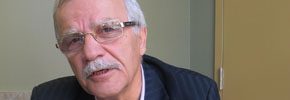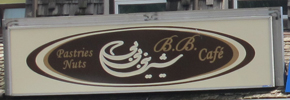Sima Sahar Zerehi – Those of us from the ancient cultures of the world often have a love-hate relationship when it comes to museums. These grand Western institutions with their cavernous foyers, marble floors and ornate columns harking back to Greco-Roman architecture, have often been the bearers of our homeland’s greatest treasures.
It’s hard for many of us from Iran, Iraq, and Egypt to walk along the glass displays in most museums in Western countries without being haunted by the images of Indiana Jones or Laura Croft-like archaeologists raiding our national treasures with the implicit or explicit assistance of our local corrupt or despotic governments.
At the same time the museums are some of the only institutions that seem to pay homage to our cultural heritage, it’s behind their tempered glass displays that one can see the ancient tapestries, tile works, and treasured artefacts that chronicle our rich history and colourful traditions.
Unlike most Western art galleries, which seem to focus almost exclusively on the cultural productions from European and North American nations, our Middle and Near East cultural products are headlined in Western museums.
In the past, museums were the places that offered a glimpse of the East for the benefit of the Western gaze. Our artistic and architectural treasures were displaced from their homeland and made available to people in Europe and North America where they were studied, chronicled, and archived. Museums in turn would attract crowds by emphasizing the exoticism of their treasures.
But nowadays, in a Toronto that houses an ever-increasing immigrant population, the museum racket is adapting its marketing strategy to address the changing population. Today’s museums are realising that their displaced objects can also attract displaced peoples.
In the past few years the Royal Ontario Museum has introduced a series of innovated programs designed to attract various ethno-cultural communities. They have aggressively highlighted their Chinese, South Asian and Korean collections to name a few and have worked in partnership with these communities to organize special programming in order to bring these ethnic populations to the ROM. One of their successful initiatives has been the introduction of South Asian Heritage Day, which is now in its third year.
On Saturday May 14 it was our turn to take over the ROM for the first Annual Iranian Heritage Day. The event, which was organized by the Toronto Iranians Community Group, was heralded as a tremendous success.
Behnam Esfahanizadeh, the President of the Iranian Canadian Congress and Project Manager of Iranian Heritage Day gushed about the day’s success.
He noted that the level of community support for the event took the ROM staffs aback. He states, “The reception of the Iranian community was magnificent – the ROM staff kept on congratulating us and called it the best Heritage Day.”
Mohammad Sheikholeslami the Vice President of Toronto Iranians and the Financial Officer of Iranian Heritage Day notes, “The feedback that I got from the ROM was that they didn’t expect such a large turnout.”
He explains, “On Friday we had only sold 68 tickets online, we also had some ticket sales through the stores but that was only a handful. I had imagined that at most we would sell 300 to 400 tickets.”
According to event organizers approximately 1,300 to 1,500 people attended Iranian Heritage Day at the ROM. Throughout the day the museum was overflowing with Iranians of all ages from little children making crafts, to the elderly enjoying classical Iranian music performances, to youth clapping in rhythm with the dance performances.
According to Sheikholeslami such events are not only important for the communities that host them, but also for the ROM in terms of outreaching to new audiences and increasing ticket sales. “The approach that the ROM is currently employing for promoting itself is to work in partnership with other communities. Our event increased their ticket sales. This has left a positive impact. Now they see the potential in investing in the Iranian community.”
The Iranian Heritage Day’s events included various live music performances by individuals and groups such as Baarbad Ensemble as well as various dance performances by Ida Meftahi, Beeta Jafari and group performances by Aftaab, Gisoo Dance and Odlar Dance Group. In addition to the Main Stage set up in the museum foyer, smaller stages were scattered throughout the museum, filling the entire venue with music.
The events also included various hands-on activities, a fashion show, lectures and film showings as well as Iranian food at the ROM restaurant. In short there was something for everyone.
The programming highlighted a diversity of Iranian cultures and traditions from classical and folkloric pieces to modern interpretations. The event was a success as it managed to display the diversity within Iran as well as showcase the local talents of young Iranian performing artists.
The humorous emceeing of our local celebrity Jian Ghomeshi, the host of the CBC radio program Q enlivened the events on the main stage. Ghomeshi brought the house down at the end of the program when he shared a few sentences in Farsi, although he had trouble finding some words, the appreciative audience helped him along by shouting out suggestions and hints.
Although Iranian Heritage Day was executed flawlessly, organizers admit that the entire event was put together in a relatively short time. Esfahanizadeh speaks about how the project was initiated, “Leila Moslemi who volunteers at the ROM in the Education and West Asian Departments contacted me with the idea of organizing an Iranian Heritage Day at the museum. I was excited about the idea and volunteered my time immediately.”
He notes that since that initial contact the planning moved very quickly. “The project commenced in February but it wasn’t until March when we received the promotional postcards to outreach for the event. In the end we really only had two months for the preparation and outreach for this event,” explains Esfahanizadeh.
Sheikholeslami admits that the success of the event could be attributed to the involvement of young Iranians in the project. He states, “We utilized the talents of the children of Iranians in our community – the young Iranians who had grown up here became the ones responsible for the programming – they had both the Iranian as well as Canadian sensibility.”
Ladan Lotfi, who is a performer and dance teacher and director of Aftaab Dance Group was the Dance Coordinator for Iranian Heritage Day. She speaks about her role in organizing the day’s dance program.
She explains, “When we have so much variety in terms of dance it becomes important to select the right balance of performances.”
Lotfi adds, “In deciding on the performances, it was important for me to highlight the diversity of Iranian cultures and dance traditions. We wanted to have group performances, solo performances, traditional as well as modern pieces. But I also wanted to showcase those who had something to share.“
“To be honest although everyone was volunteering their time, it wasn’t very hard to get people to agree to participate, most people were receptive when they learned that the event was at the ROM,” explains Lotfi.
In addition to the music and dance, viewers had an opportunity to see some of the ROM’s treasures from Iran.
One of the pieces on display that caught my eye was a blue mosaic tile panel composed of thousands of tiny glazed ceramic components. The panel looked like a complicated jigsaw puzzle with intricate pieces that fit together to make a breathtaking design. The sign underneath the mosaic explains that this fragment of a panel comes from the Shiite shrine of Zayn al-Mulk and was built by his grandson, Ja’far born Ali al Husayni al-Adhami al-Gubari.
I have often stared at this piece and tried to imagine how it arrived here and who was able to put it back together in its original state.
On Saturday I finally received my answer when by chance I met Mary Faghani, the woman behind the mosaic. Faghani worked in the ROM from 1980 to 1982 as a conservator. One of the projects assigned to her by her mentor Lisa Golombek was to restore the mosaic faience panel. She was given access to thousands of fragments varying from large pieces consisting of three or four tiles still stuck together to mere chips only millimetres in diameter.
Faghani notes, “I worked on the tiles for one and a half years. At the time I was in the process of writing my Master’s thesis and I was hoping to continue my studies in an arts program at the University of Toronto.”
She continues, “Lisa Golombek found me and recruited me to work on this tile work – the pieces had been in storage at the ROM for a while.”
“In my research for my Masters which was based on this tile panel I discovered that the person who brought this piece to the West was living among the people in Esfahan where this is from, the tiles which were taken with the pieces of the wall still attached to the back in order to preserve the work, were transported by camel out of the borders of Iran to Paris and sold to museums.”
In addition to working on the restoration of various pieces at the ROM including the three Chinese wall murals Faghani also organized the first Iranian event at the ROM in 1992.
She recounts, “In 1992 we organized an elaborate dinner party for Nowruz at the ROM. We had a complete Iranian dinner and even a performance by an orchestra. We were able to sell 450 tickets at that time. We had recruited the help of the various organizations and Iranian newspapers to help us promote the event.”
When comparing Iranian Heritage Day to her Nowruz event she admits that the recent initiative is a step forward for the community. She notes, “I was glad that the youth were involved – the new generation of Iranian-Canadians like my grandson are the ones who need to champion the Iranian culture. These events allow children to gain a sense of pride and discover their roots – I believe that if Iranian-Canadians continue to support these museums the museums will work harder to showcase our culture.”
Esfahanizadeh and Sheikholeslami, both stressed how this event would not have been possible without the support of the Iranian community. Numerous Iranian media outlets, associations and organizations supported the event.
Sheikholeslami states, “I want to thank the community – if we had done all this and the community didn’t attend it would not have been a success. I want people to know that they have an important role to play in making these events a success.”






